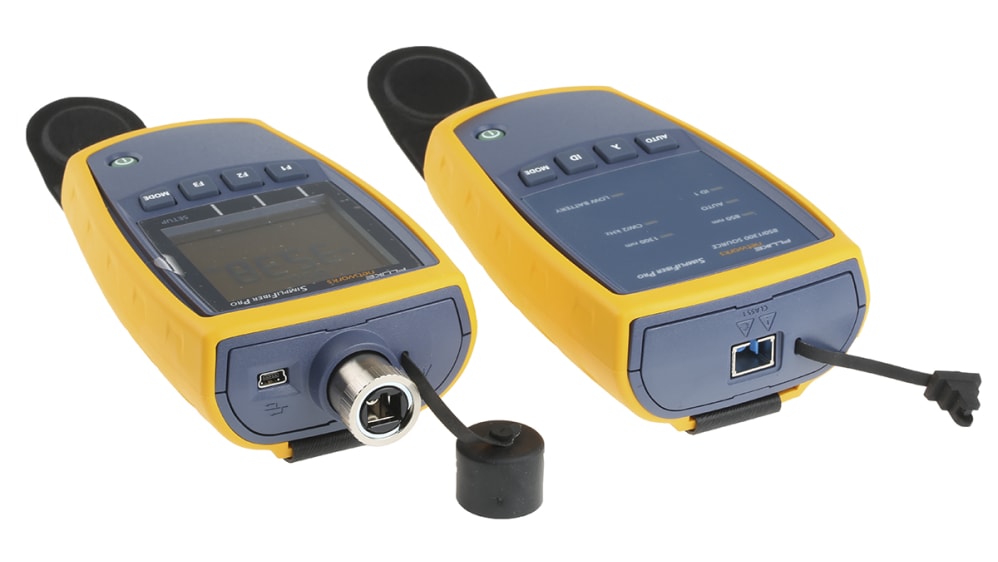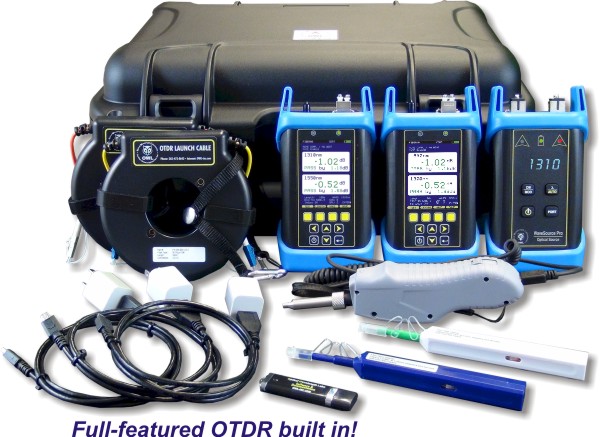A Comprehensive Overview to Optical Measurement System for Fiber Analysis
When it pertains to fiber analysis, comprehending optical dimension systems is important for evaluating efficiency and ensuring quality. You'll check out necessary techniques like interferometry and spectroscopy, which assist you gauge vital specifications. There's even more to it than just these methods; mastering attenuation measurement methods can significantly impact your network's performance. As you navigate through this overview, you'll discover insights that might transform your method to fiber optics.
Understanding Optical Measurement Solutions
When you explore optical measurement systems, you'll discover they're important for examining fibers with accuracy. These systems make use of light to assess different qualities of fibers, including size, refractive index, and uniformity. By utilizing methods like interferometry and spectroscopy, you can obtain useful insights into the fiber's properties.You'll discover that these systems are created to minimize mistakes and improve accuracy, guaranteeing trustworthy information for your evaluation. Various arrangements, such as single-mode and multi-mode systems, cater to certain fiber kinds, permitting you to pick the most effective fit for your needs.Moreover, the integration of advanced software application tools aids you analyze the data effectively, making it much easier to determine any type of disparities or problems. As you investigate deeper into these dimension systems, you'll appreciate how they enhance the logical procedure and enhance the overall quality of fiber manufacturing and testing.
Trick Specifications for Fiber Analysis
Secret parameters for fiber evaluation play a crucial duty in establishing the top quality and efficiency of fiber optics. When you assess a fiber, you'll wish to concentrate on attributes such as depletion, transmission capacity, and modal diffusion. Depletion gauges the loss of signal toughness as light trips with the fiber. A reduced attenuation worth shows far better high quality and longer transmission distances - optical measurement system.Bandwidth describes the data-carrying ability of the fiber and is crucial for high-speed communication. You'll require to evaluate the data transfer to ensure it fulfills your application demands. Modal dispersion, which occurs from the different rates at which light travels via numerous settings in multimode fibers, impacts signal quality
Techniques for Attenuation Measurement

Data transfer and Its Influence On Performance
Comprehending transmission capacity is essential for maximizing fiber efficiency, as it directly influences the quantity of data that can be sent over a network. Greater bandwidth implies you can send more info all at once, permitting faster interaction and better total efficiency. When you're working with fiber optics, it's essential to think about just how transmission capacity connects with fiber characteristics, such as core dimension and material properties.If the bandwidth is limited, you might experience data loss or slower rates, affecting your applications. In addition, various sorts of fibers can support differing data transfer levels, so it is essential to choose the right fiber for your specific needs.You ought to also remember that environmental elements, like temperature level and outside interference, can impact data transfer. By comprehending these facets, you can make enlightened choices to boost your fiber optic systems, ensuring reputable and efficient information transmission.
Refractive Index Measurement Techniques

Total Inner Reflection
Overall inner reflection (TIR) functions as a fundamental principle for gauging the refractive index of fibers. When light trips from a denser medium to a much less thick one, it can only be fully shown if the angle of incidence surpasses a certain limit, known as the critical angle. This sensation allows you to establish the refractive index by evaluating the angles at which light shows or refracts. By making use of a configuration that guides light into a fiber and measures the resulting angles, you can calculate the refractive index properly. Recognizing TIR not only improves your fiber analysis however also enhances the style and performance of optical systems. So, leveraging TIR can bring about extra reliable fiber-based applications.
Interferometric Methods
Building on the concepts of complete inner reflection, interferometric strategies offer an effective methods for measuring the refractive index of fibers with high accuracy. These methods manipulate the interference patterns developed when light beam of lights split and recombine after traveling different courses. You can make use of setups like the Michelson or Mach-Zehnder interferometer to evaluate phase shifts brought on by adjustments in refractive index. By thoroughly calibrating your system and analyzing the resulting edges, you can establish the refractive index with impressive accuracy. It's essential to maintain secure environmental problems to lessen mistakes. With these methods, you'll improve your understanding of fiber residential properties, leading to far better efficiency in numerous applications, from telecoms to sensor innovation.
Modal Diffusion and Its Relevance
Modal dispersion describes the spreading of light pulses as they travel via a fiber, which can impact the general efficiency of the system. You'll see that this phenomenon try these out can result in signal distortion, impacting information transmission rates and high quality. Understanding its importance is vital for optimizing fiber optic designs.
Meaning of Modal Dispersion
In optical fiber interactions, modal dispersion plays a considerable role in identifying signal top quality and transmission speed. It happens when different light settings take a trip at differing speeds via the fiber. Because each mode has distinctive paths and features, they can reach the getting end at different times. This moment distinction can bring about signal dispersing and distortion, which can break down the overall efficiency of the communication system. You might come across modal dispersion primarily in multimode fibers, where the several paths of light intensify the problem. Understanding modal diffusion is necessary for optimizing fiber styles and guaranteeing that your communication systems operate effectively, preserving the honesty of the transmitted signals over longer ranges.
Effects on Fiber Efficiency
Understanding modal dispersion assists highlight its impacts on fiber performance. This sensation occurs when various modes of light traveling at differing rates within the fiber, bring about signal dispersing gradually. As you analyze fiber optics, you'll observe that boosted modal dispersion can considerably break down signal top quality, causing minimized data transfer and longer transmission ranges. In sensible terms, this means your data can show up altered or delayed, impacting total communication effectiveness. To minimize these results, you might consider making use of single-mode fibers, which minimize modal dispersion. By choosing the right fiber kind and comprehending exactly how modal diffusion influences performance, you can enhance transmission quality and warranty reputable data transfer in your optical measurement systems.
Tools and Technologies for Optical Measurements
When it involves optical measurements, several ingenious tools and technologies are at your disposal to enhance fiber analysis. You'll find fiber optic testers, which assess signal quality and efficiency, crucial for preserving excellent network effectiveness. Optical time-domain reflectometers (OTDRs) are critical for finding faults and measuring loss over ranges, offering comprehensive insights right into fiber honesty. In addition, spectrometers can evaluate light spectra, assisting you determine product properties and composition.Don' t forget the significance of imaging systems, like digital microscopes, that enable you to visually check fiber surfaces for issues. Likewise, take into consideration using polarization analyzers to gauge stress and strain in fibers, which Resources is crucial for recognizing their habits under various problems. By leveraging these tools and technologies, you can significantly enhance your fiber analysis procedures, making sure dependability and high efficiency in your optical networks.
Often Asked Inquiries
What Are the Costs Linked With Optical Measurement Solutions?
The prices connected with optical measurement systems can vary greatly. You'll require to examine tools costs, maintenance charges, software program licenses, and potential training expenditures. Budgeting meticulously will help you avoid unexpected financial challenges down the line.

Exactly How Typically Should Fiber Evaluation Be Executed?
You ought to do fiber analysis regularly, generally every 6 months or after substantial adjustments in the setting (optical measurement system). This ensures ideal efficiency and helps determine prospective issues prior to they influence your system's performance and integrity
Can Optical Measurement Solutions Be Calibrated in the house?
Yes, you can adjust optical measurement systems in the house, however it requires accuracy. Ensure you follow the maker's standards, utilize proper calibration requirements, and ascertain your results to ensure accuracy in your dimensions.
What Industries Commonly Use Optical Measurement Solutions?
You'll locate optical dimension systems extensively view it utilized in industries such as telecommunications, manufacturing, healthcare, and research study. They're vital for quality assurance, fiber evaluation, and ensuring exact dimensions in numerous applications, enhancing performance and accuracy throughout industries.
Are There Any Kind Of Security Issues With Optical Measurement Solutions?
Yes, there are safety and security issues with optical dimension systems. You must constantly use protective eyeglasses to secure your eyes from extreme light sources and warranty correct training to handle equipment safely and avoid accidents.